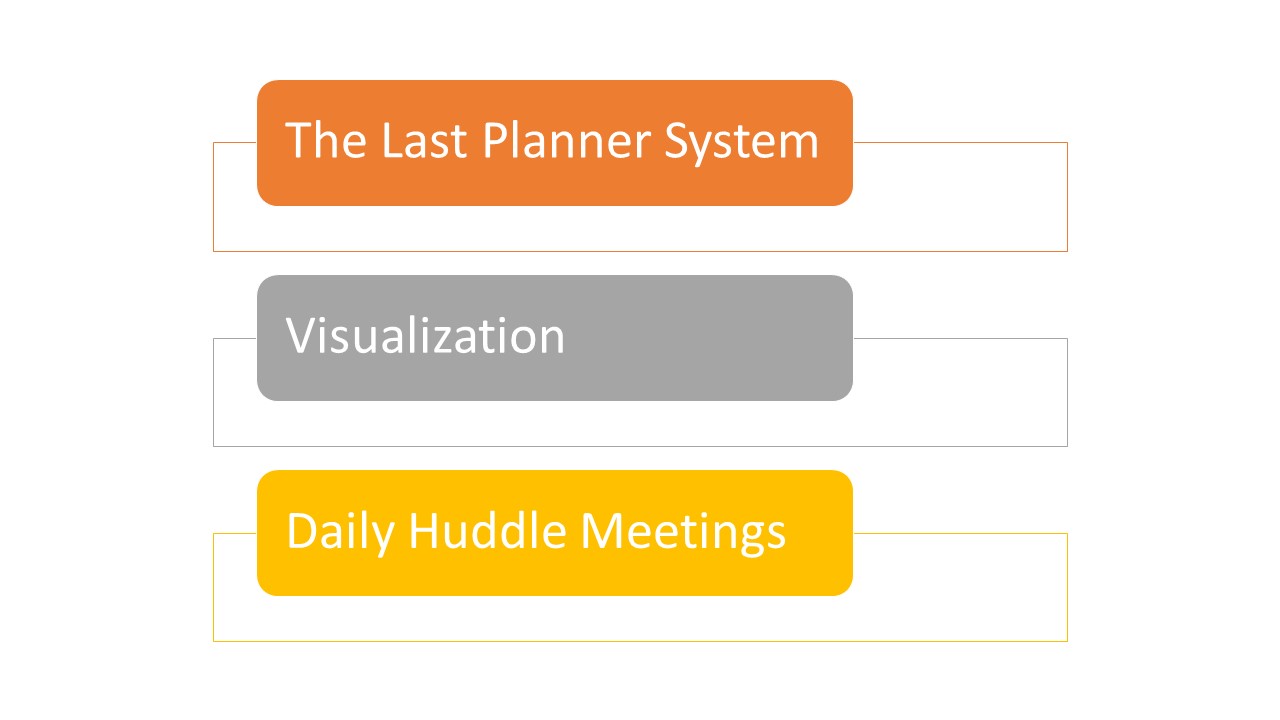The Lean production system has gained a tremendous amount of success in its originating sector – manufacturing. Realizing that other fields also have operational challenges, via best practice transfer, alternate sectors have started to adopt the methodology and improve their efficiency and turnaround time.
From banks to hospitals to transportation centers, Lean is the way to improved operational efficiency. The construction industry is no stranger to lean concepts, and will be today’s topic of focus. Various Lean tools have been utilized to optimize construction management, and make the project management of such activities easier to execute. Due to the differences in the nature of the operations of construction sites versus manufacturing industry operations, adaptations of existing Lean principles have been found to be the best tools for construction applications. The following are a few tools that have been instrumental in the optimization of the construction industry, and have paved the way for its Lean operations.
Due to the differences in the nature of the operations of construction sites versus manufacturing industry operations, adaptations of existing Lean principles have been found to be the best tools for construction applications. The following are a few tools that have been instrumental in the optimization of the construction industry, and have paved the way for its Lean operations.
The Last Planner System of Production Control
The Last Planner System of Production Control is a realistic planning tool, that facilitates team planning and resource optimization. The system syncs construction scheduling and production control activities. The primary objective of the exercise involves resource usage optimization while meeting customer end requirements in the most efficient manner possible.
The Last Planner System methodology has proven itself, even in complex construction project management activities. The intense focus on workflow management, helps to eliminate any disturbances in the construction process, by ensuring that the appropriate buffer systems are in place to alleviate any unexpected changes.
The operational planner in this system is known as the Last Planner and manages the systems resource management. As the operational manager, the Last Planner optimizes the work flows and monitors project assignment completion per unit time. Schedule management is critical to successful Project Management execution.
The Last Planner System ensures that the construction management project is designed as a pull system, driven by customer demand, in order to optimize resource usage. System optimization and extensive two-way communication is also facilitated in order to eliminate any system bottlenecks.
Visualization
The Lean construction tool used to communicate key information is known as the Increased Visualization tool. This tool facilitates the effective communication of critical process information to the relevant staff members, and is usually executed via appropriate signage in order to facilitate no mistakes in project execution.
Applying the fact that our minds are stimulated visually, it is best to design systems that facilitate this attribute, instead of complicated systems which do not provide appropriate guidance.
By having the appropriate signage per construction activity, improved project safety can be optimized. Additionally, the project quality will be improved, because with improved project quality, there will be limited likelihood of mistakes during project completion.
Daily Huddle Meetings (Tool-box Meetings):
The Daily Huddle Meetings set the tone for the day. With all operations, the operations managers want the process to flow smoothly, and it is in the best interest of the system managers to indicate to the team members, how important the job they are about to do is.
Typically, a daily huddle meeting starts off with a briefing of the day’s activities. If there are follow up activities from yesterday’s jobs, they are indicated first, followed by the new activities that will be executed.
With each job, there’s a general run through of what’s to be expected, who’s going to be onsite, and any relevant safety precautions that are to be factored into the job. The expertise of personnel on the job is factored in, to ensure that no one is working alone, or is inexperienced.
Studies have shown that the more experienced candidates are more likely to take the most risks, since they are over confident, so now’s a good time to refresh persons on their likelihood of errors, and what can be done to reduce the odds of them happening.
At the end of the meeting, workers are empowered to ask questions, so that they are assured and certain of what the day will bring.
5S
The 5S system is an organizational system. Essentially the system encapsulates “A place for everything, and everything in its place.” An organized workspace, ensures that all items needed to execute a job are facilitated. Lack of resources delays projects, and 5S eliminates this deficiency. Via appropriate housekeeping systems, the organization not only boosts employee morale, but facilitates its final objectives during operational activities.
These three systems are just some of the tools utilized in lean construction to optimize process operations. They have been instrumental in improving project management activities.
